TL;DR
Final Fantasy VII Rebirth is a massive, visually stunning sequel that expands on its predecessor with a vast open world and engaging gameplay. While struggling with some frame rate issues and the occasional "Japaneseness" that might not appeal to everyone, its epic narrative, incredible audio, and wealth of content make it an unforgettable experience. It’s a game that easily consumes your time, leaving you wanting just one more quest. Dive into this breathtaking reimagining of a classic, but be warned: you won't want to put it down. Read the full review to see why it’s a must-play.
The clock reads 21:34 on a weekday evening. I’m immersed in a side quest within the expansive open world of Final Fantasy VII Rebirth. “I likely have time for one more quest,” I tell myself. The next thing I know, it’s 01:32, and I’m internally debating the urgent need for sleep against the allure of just one more objective before my alarm sounds in less than five hours. The sequel to what many consider the best game of 2020, Final Fantasy VII Remake, has arrived, and it’s the kind of experience that leaves you wishing for more hours in the day.
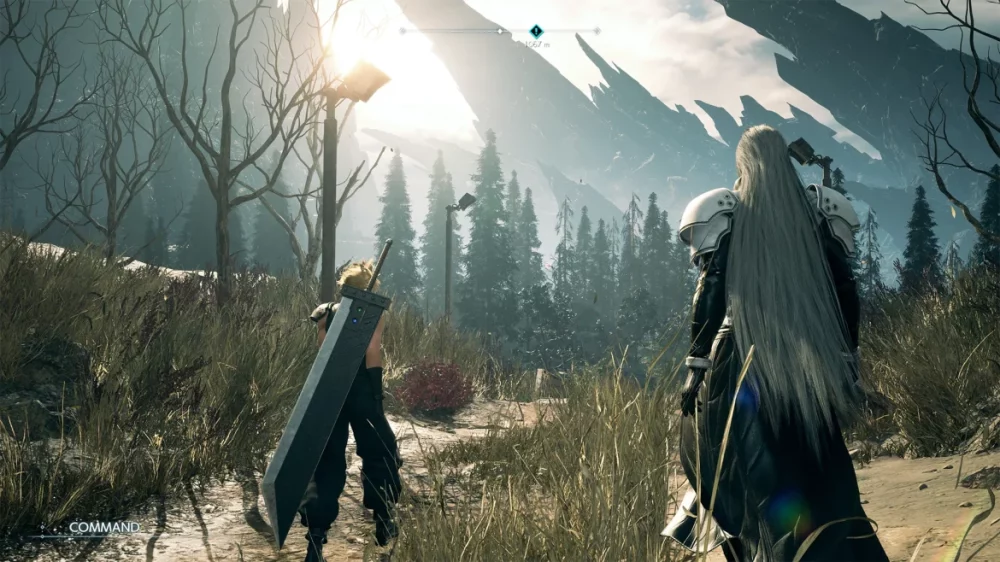
Almost four years have passed since the previous installment, which became a standout title for the PS4. Many have eagerly awaited the continuation of the saga, a re-imagining of a beloved game from our youth. We once again assume the role of Cloud Strife, a former SOLDIER seeking revenge against his former mentor, Sephiroth. Accompanying him are familiar allies: Aerith, Tifa, Barret, and Red XIII, as well as new faces like Yuffie (from INTER-mission). While Final Fantasy VII Rebirth draws inspiration from the original 1997 release, it presents a significantly altered narrative and timeline, effectively creating a distinct, new gaming experience. For those who may have forgotten the specifics of the first game (understandable, given the time elapsed), a recap is provided below. Let’s dive in:
As evidenced above, the narrative complexity often associated with Japanese storytelling is present. Given the gameplay similarities with the previous title, readers unfamiliar with the series are encouraged to consult the Final Fantasy VII Remake review for foundational understanding. This review will primarily focus on the differentiating, novel, and unique aspects of this particular installment.
Final Fantasy VII Rebirth exudes ambition. It’s evident that this is a flagship project for Square Enix on Playstation, reflecting a significant investment of development resources. The release of the sequel on Playstation 5 was anticipated, though the extended development cycle was less so. Has the wait been justified? In my assessment, unequivocally yes. Final Fantasy VII Rebirth is larger in scope, visually more stunning, and even more engaging than its already impressive predecessor.
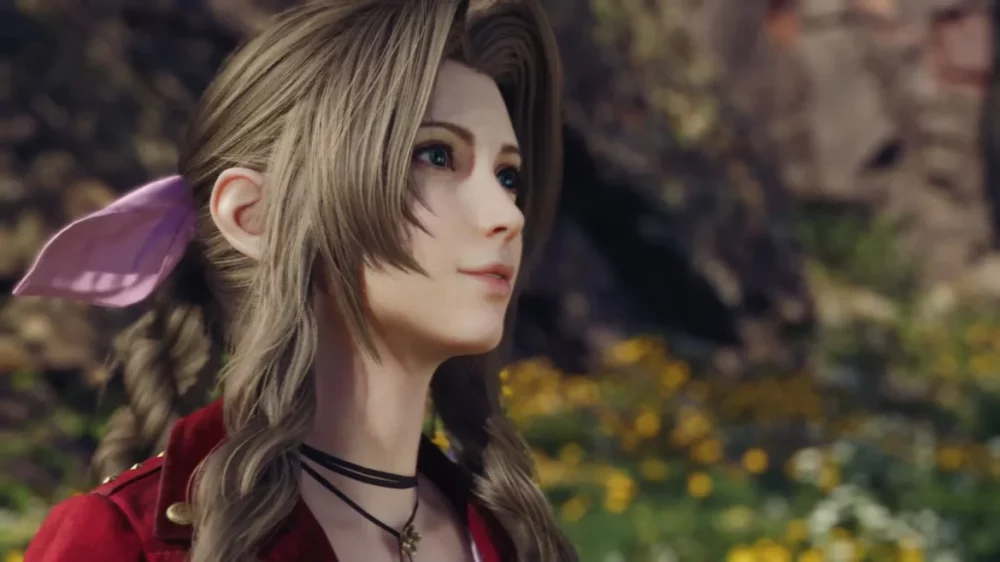
The graphics are often breathtaking. Summons and formidable bosses like the Midgar Serpent and Titan contribute to an epic visual experience, particularly when viewed on a high-quality home theater display and paired with a capable home theater system or a set of quality gaming headphones. Lighting effects and celestial renderings approach photorealism, and the expansive world loads near-seamlessly, attributable to the console’s fast SSD and strategic design choices, such as specific environmental transitions that provide loading headroom. However, this visual and auditory fidelity comes at a computational cost. In Graphics mode, the game exhibits noticeable frame rate instability, prompting a switch to Performance mode. While Performance mode targets 60 fps, it doesn’t maintain it consistently. Performance mode offers two sub-settings: Sharp, which provides superior visual clarity, and Soft, which prioritizes frame rate stability. The Soft setting introduces a slight blurring effect, but may be preferable for players seeking the smoothest possible gameplay. Personally, I find myself anticipating the potential arrival of a more powerful PS5 Pro iteration this fall.
The audio design is exceptional, featuring well-balanced sound effects, an epic musical score with a new composition by the renowned Nobuo Uematsu, and a surprisingly compelling English voice cast that, arguably, surpasses the somewhat subdued Japanese counterpart. At its zenith, FF 7 Rebirth echoes the groundbreaking nature of the 1997 original, offering a novel form of interactive entertainment. This stems not so much from individual innovations, but from the overall execution and synergistic blend of elements. The game strikes a harmonious balance between fantasy, drama, elements of Japanese-style melodrama, tragedy, epic scale, and action role-playing mechanics. The game features a significant number of menus, upgrade trees, and ancillary systems. However, with a measured approach, these systems unlock and integrate logically as needed.
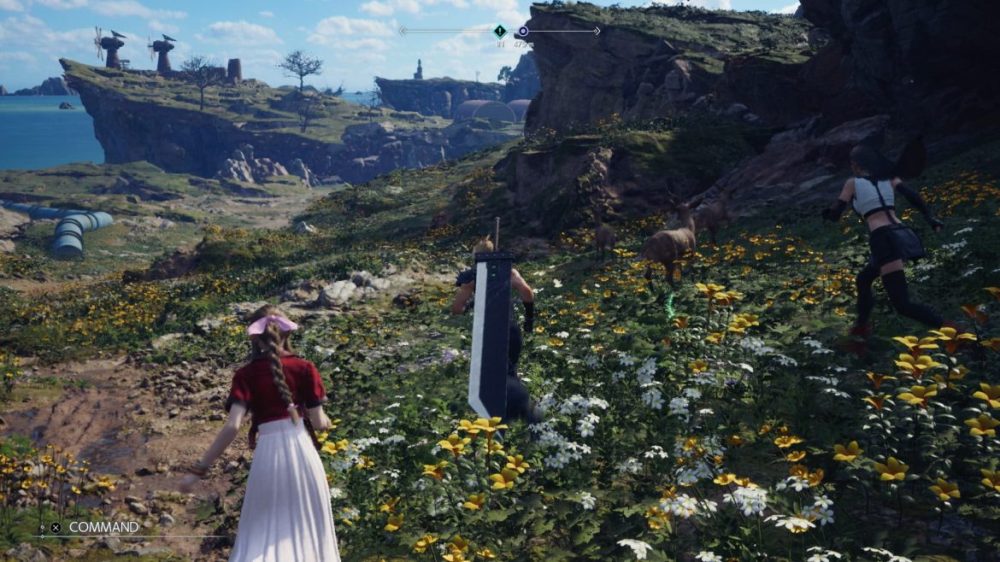
The expansive game world warrants further emphasis. Its sheer size contributes significantly to the immersive experience. The world is populated with numerous activities, enemies, and resource-gathering opportunities, reminiscent of Witcher 3 (though the side quest quality doesn’t quite reach the same level as CD Projekt RED’s offering). In a similar vein, Final Fantasy VII Rebirth introduces its own card game, Queen’s Blood. While not as dynamically complex as Gwent, it offers an accessible ruleset and a compelling degree of strategic depth. The game also incorporates an addictive card-collecting component.
Final Fantasy VII Rebirth presents a world that is easy to lose oneself in. Focusing solely on the main story missions might allow completion within 25-30 hours. However, doing so would sacrifice much of the experience and create unnecessary challenges, as engaging with side content unlocks character enhancements, new abilities, summonable entities, and improved materia (magic). Final Fantasy VII Rebirth offers a wealth of content – perhaps even an abundance. It’s easy to become engrossed in side activities for extended periods, driven by the desire to complete “just one more” mission from the character Chadley. Ultimately, FF 7 Rebirth is best enjoyed at a relaxed pace, similar to the 100+ hours I invested in my initial playthrough of Witcher 3.
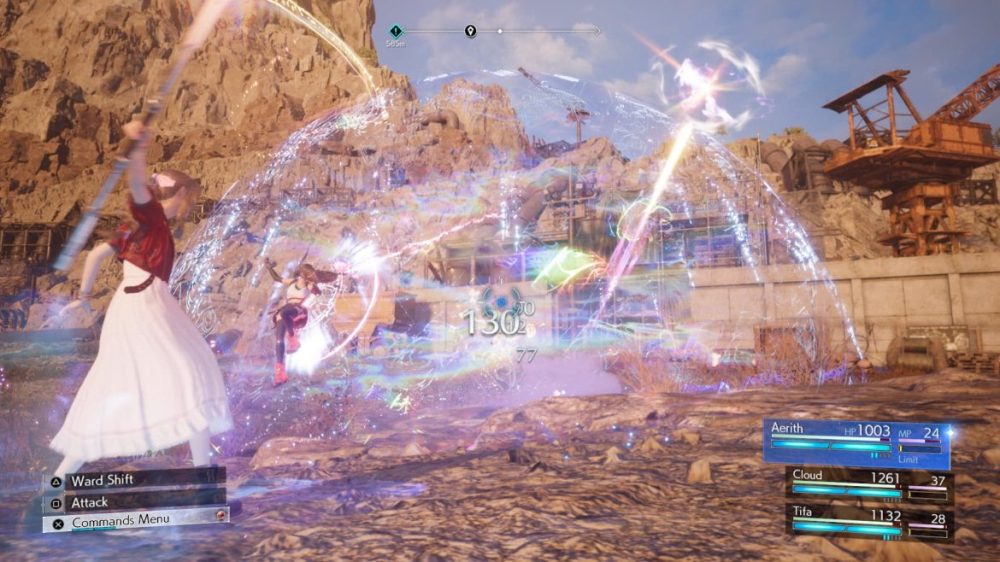
The game is not without its imperfections, beyond the aforementioned performance considerations (which may be addressed in future updates). Chocobo riding, while perhaps intended to feel “realistic,” isn’t consistently enjoyable (even accepting the premise of riding a magical bird that can locate treasures and engaging in combat against fantasy creatures). The inclusion of both a mini-map and a separate tracker (requiring a choice between the two) would have improved navigation, as spatial orientation can be challenging when exploring numerous side paths. The tracker is useful, but frequent switching to the full-size map becomes somewhat cumbersome. Furthermore, the game exhibits certain aspects of pronounced “Japaneseness” that may not appeal to all players, including elements of melodrama, theatrical sequences (such as encounters with underworld villains encountered repeatedly), and a storyline featuring time jumps, alternate timelines, and “magical thinking” (familiar to players of Square Enix’s Kingdom Hearts series). However, these are minor criticisms in the context of a genuinely immersive and compelling gaming experience.
While I never fully understood the desire to remain in the animated 3D world of Avatar‘s Pandora, I can empathize with those who wish to prolong their time within the world of Final Fantasy VII Rebirth indefinitely. I count myself among them. This, in my opinion, constitutes a clear recommendation. The fact that a concluding installment in this alternative timeline is already well into development – rumored to focus on Cid’s airborne adventures, as in the original – is welcome news. Like the upcoming Kratos saga, I eagerly anticipate its arrival, whenever that may be.
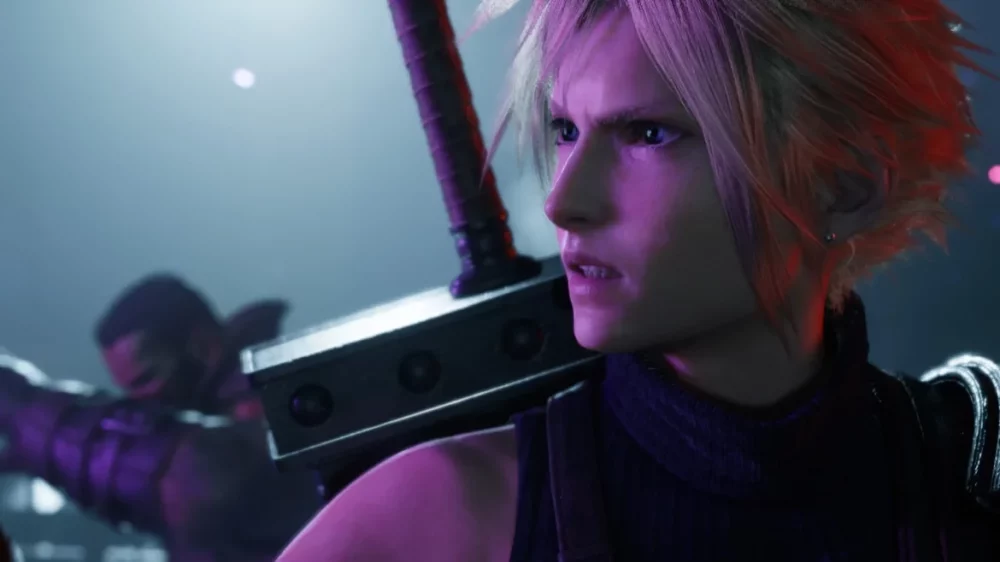
Final Fantasy VII Rebirth is yet another outstanding game to grace us in 2024, remarkable considering we’re still in the year’s first quarter. A must-have title for PS5 owners with any interest in fantasy, action, and adventure genres.
Square Enix provided review code for this assessment through Plaion. Provision of review materials does not influence editorial objectivity.

